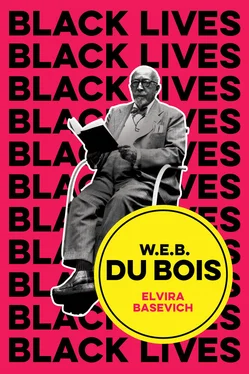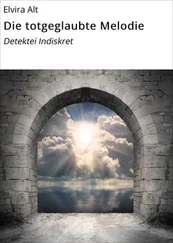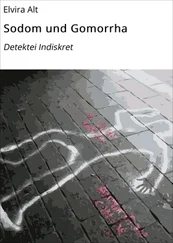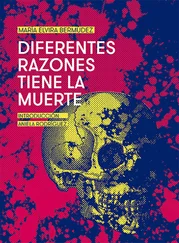Du Bois’s abiding relevance for anti-racist struggle today offers insight into how the color line works today and how grassroots organizing might counteract it. The color line functions both to cause racial realities and to obscure their existence in a white-controlled polity. For Du Bois, to value black life across the color line is the central task of the republic, and successful grassroots movements illuminate disrespectful and derogating practices. In spite of the gains of the civil rights movement and the election of the first black president, the disrespect and derogation of the African-American community continues to undermine the legitimacy of the republic and test the commitment to democratic ideals for both vulnerable and privileged racial groups. A little more than a century after Du Bois published The Souls of Black Folk , the Black Lives Matter movement emerged to condemn the killing with impunity of African Americans by officers and vigilantes. Because structural inequalities bolster police violence, as the movement grew, it expanded its focus to show the intersection of police violence with mass incarceration, poverty, de facto segregation, the devaluation of labor, and the loss of housing and education opportunities in black and brown communities. The call to disrupt police and vigilante violence against African Americans is the heart of the Black Lives Matter movement; yet the call also serves to bring greater awareness of black vulnerability in social, economic, and political life.
The Black Lives Matter (BLM) movement was sparked by the acquittal of George Zimmerman in 2012. Zimmerman fatally shot a black 17-year-old high-school student Trayvon Martin in a gated community in central Florida. After a police dispatcher had instructed him to step down, Zimmerman pursued Martin, claiming, “This guy looks like he’s up to no good, or he’s on drugs or something.” He continued, “These ***holes always get away.” 4Martin was unarmed and wearing a gray hooded sweatshirt; he had stepped out to buy snacks and it cost him his life. Zimmerman would later capitalize on his notoriety by selling online the gun he used to shoot Martin for US$139,000 and his amateur paintings of the Confederate and the American flags for as much as US$100,000. 5
After Zimmerman’s acquittal, the co-founders of the BLM movement, Alicia Garza, Patrisse Cullors, and Opal Tometi, demanded accountability for anti-black violence. In bringing the rash of legal lynchings into the national spotlight, the movement challenged public perceptions about the value of black life. For Du Bois, to counteract the phenomenon of the color line, the American public must be compelled to witness the black experience of America and to recognize that it stands in stark contradiction to democratic ideals. Not only do democratic institutions continue to fail to protect the most vulnerable members of the polity. The American public casts doubt about whether black lives are really in harm’s way. Many resent the call to even pay attention to the possible racial dimension of policing practices; the color line thus obscures racial realities. As a consequence, the basic right to life – to have one’s fair shot at being-in-the-world – is denied to African Americans; and it is extremely difficult to build more nuanced claims to justice when one’s basic right to exist is insecure. Hence the radical power of the assertion that black lives matter .
In chapter 13 of Souls , Du Bois depicted the fictional tale of a young black man, John Jones, who has returned to his hometown of Altamaha, Georgia after receiving a college degree in the North. A white mob lynches Jones for defending his sister against a white rapist. Du Bois narrated Jones’s last thoughts:
Amid the trees in the dim morning twilight he watched their shadows dancing and heard their horses thundering towards him, until at last they came sweeping like a storm, and he saw in front [a] haggard white-haired man, whose eyes flashed red with fury. Oh, how he pitied him, – pitied him, – and wondered if he had the coiling twisted rope. Then, as the storm burst round him, he rose slowly to his feet and turned his closed eyes towards the Sea.
And the world whistled in his ears. 6
Though fictional, Du Bois’s account of the last moments of Jones’s life represents a moral truth about what it means to be a victim of racist violence. Jones was “swept like a storm” by the mob and, even as they asserted their gross claim to his physical body, he “pitied” his executioners; Jones saw their souls distorted by fury and fear in a way that they could not see themselves. In pitying his executioners, Jones asserted his spiritual sovereignty over them – that a vital portion of his self will not bend to their will. Of course, spiritual sovereignty can seem wanting against the destruction of the physical body. Du Bois’s insight here, I submit, illuminates black insight into white souls disfigured by bigotry and asserts the right to black hope for liberation. “But not even this was able to crush all manhood and chastity and aspiration from black folk.” 7In his stark rendering of the white soul, for Du Bois, their “pitiful” deeds cannot be the final judgment about, and summation of, what it means to be a human being; instead, he cemented the victims of lynch mobs as the rightful judges of America, as those whose souls must live on in our collective consciousness. So too the Black Lives Matter movement upholds the value of the black lives lost and elevates their experience of violence as the true reflection of American racial realities. “We must exalt,” implored Du Bois, “the Lynched above the Lyncher, and the Worker above the Owner, and the Crucified above Imperial Rome.” 8
After Reconstruction, lynching mobs exploded across the United States. Between 1882 and 1968, historians estimate 3,500 African Americans were killed. The destruction of the black body was a public festival, complete with the sale of photographs and souvenirs of the cut-up bits of the victims’ bodies. In Dusk of Dawn , Du Bois recounted that when he found Sam Hose’s knuckles on display in a shop window in Atlanta in 1899, a recent victim of a lynch mob, his faith in science as a tool for racial justice reform wavered. 9Fact-based arguments alone could not stop anti-black violence or the family picnics around the burnt and mutilated remains of black people. He began to search for a more expansive way to combat the celebration of and complicity in racial terror. This history of violence has left a psychological imprint on the collective consciousness of the republic and today motivates, if not the celebration, then indifference and resentment against a movement to end police brutality. White nationalist groups have turned into an increasingly well-organized social force that seeks to reclaim the republic as a de jure racial caste system, reaffirming it as a white ethno-state. Today, as in the past, the claim that black lives matter is, in Baldwin’s words, a spiritual “cross” that the republic bears: the recognition, or the lack thereof, of black lives continues to define its character and shapes the history of its future. 10According to Du Bois, whenever the republic comes to value black life just a little more, it ushers in the radical reconstruction of modern American society.
Recall that the color line withdraws respect and esteem from people of color in general and from African Americans in particular. Though it cultivates a broad focus on racial realities, the Black Lives Matter movement highlights the racist violence perpetuated and condoned by the state. To be sure, the federal government had enabled the scourge of lynching of the Jim Crow era, passing an anti-lynching bill in 2018, a century after the bill was first introduced in the Senate. Legal inaction fueled white mobs. This meant that local law enforcement assured impunity for murderers, and police officials often played a role in lynchings, handing over victims to mobs, standing idle, or lighting the match themselves. The passage of the anti-lynching bill is a symbol of the ongoing fight for accountability for racist police violence as much as it is a symbol of the complicity of the state and law enforcement, then as now.
Читать дальше












